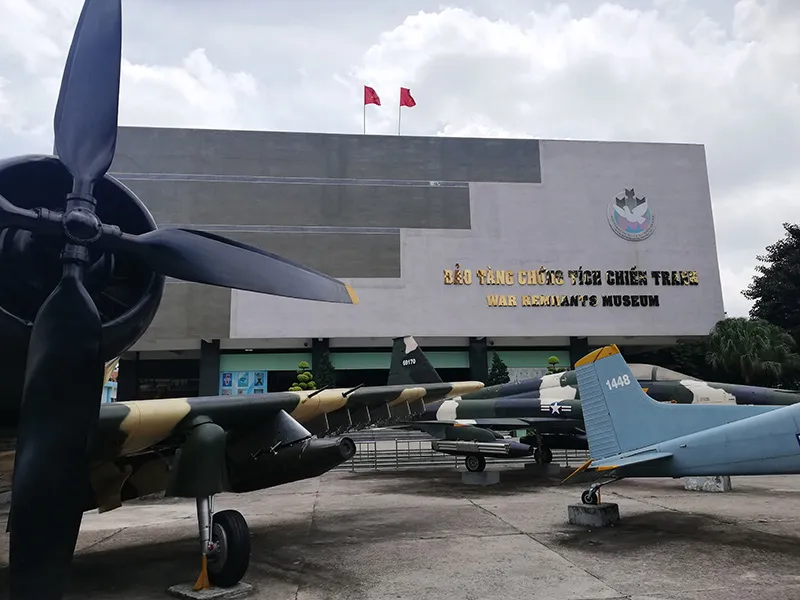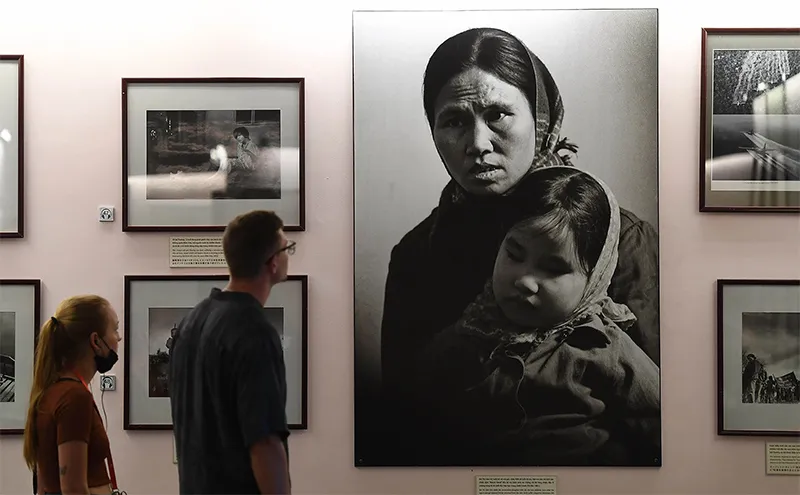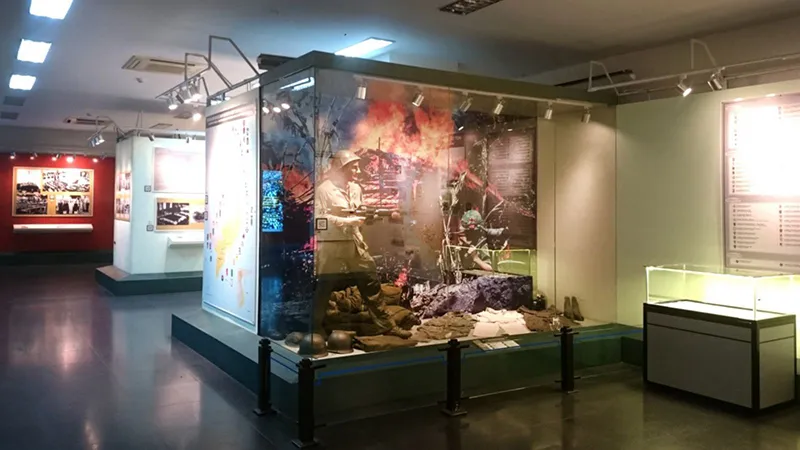The war is long over, but its remnants remain, reminding us of a period marked by both suffering and the nation’s resilience. Exploring Vietnam’s war historical sites is not just a tourist activity; it’s an opportunity to gain a deeper understanding of the history, culture, and people of Vietnam. These sites stand as witnesses to the patriotism, indomitable spirit, and aspiration for peace of a nation.
1. Introduction to Vietnam’s War Historical Sites
Vietnam’s war historical sites are not mere ruins; they are living museums preserving memories of a tumultuous historical period. From North to South, each site tells its own story, offering a unique perspective on the past conflict.
1.1. War Remnants Museum – Documenting the Past
Address: 28 Vo Van Tan Street, Vo Thi Sau Ward, District 3, Ho Chi Minh City. Opening Hours: 07:30 – 17:30. Phone: 028 3930 5587.
The War Remnants Museum is an unmissable destination when exploring Vietnam’s war historical sites. It displays photographs, artifacts, and documents related to the Vietnam War, particularly focusing on the aspects concerning the actions of the US military and the former Saigon government. The museum not only depicts the brutality of war but also conveys a message of peace, friendship, and solidarity among nations.

Admission Fee: 40,000 VND/person. Free admission for children under 6 years old, people with disabilities, and low-income families. 50% discount for children aged 6 to under 16, students, seniors, revolutionary contributors, and ethnic minorities.
1.2. Cu Chi Tunnels – An Underground Marvel
The Cu Chi Tunnels are an extensive network of underground tunnels located in the Cu Chi district of Ho Chi Minh City. This unique military structure was built during the Indochina War and the Vietnam War. The Cu Chi Tunnels served not only as shelters but also as a solid base for soldiers and civilians during the resistance against the US.

When visiting the Cu Chi Tunnels, you’ll have the chance to experience life underground, explore narrow passages, see secret Hoang Cam kitchens, and unique military constructions. It’s an unforgettable experience that helps you understand the resilience and ingenuity of the Vietnamese soldiers and people during the war.
1.3. Phu Quoc Prison – A Testament to Wartime Atrocities
Phu Quoc Prison, also known as the Phu Quoc Communist POW Camp, is located on Phu Quoc Island, Kien Giang Province. It housed thousands of revolutionary soldiers and patriots during the Vietnam War. Phu Quoc Prison earned the moniker “hell on earth” due to the brutal torture methods and harsh living conditions endured by the prisoners.

Today, Phu Quoc Prison stands as an important historical site, reminding us of the immense sacrifices of revolutionary soldiers and the atrocities committed during the war. Visiting Phu Quoc Prison, you will undoubtedly be moved by the images, artifacts, and stories of the prisoners’ lives, while also admiring their unwavering spirit and patriotism.
1.4. Quang Tri Citadel – Symbol of the “Fiery Summer”
Quang Tri Citadel is a historical relic located in the center of Quang Tri town, Quang Tri Province. It was the site of the fierce 81-day battle during the 1972 Easter Offensive (known in Vietnam as the “Fiery Summer”). Quang Tri Citadel has become a symbol of the tenacious fighting spirit and heroic sacrifice of the Vietnamese army and people during the resistance against the US.

Visiting Quang Tri Citadel offers a chance to learn about the history of the 81-day battle, pay respects at the Martyrs’ Memorial, and feel the solemn atmosphere of a land soaked in the blood of its finest sons and daughters.
2. The Significance of Exploring War Historical Sites
Exploring Vietnam’s war historical sites is more than just a tourist activity; it’s a journey back to the roots, a tribute to those who sacrificed for the nation’s independence and freedom. Learning about the war helps us better understand the value of peace, appreciate what we have today, and feel more responsible for the country’s future.
2.1. Historical Education for Younger Generations
War historical sites serve as vivid history lessons, helping younger generations understand the nation’s heroic past. Visiting and learning about these sites fosters patriotism, national pride, and a sense of responsibility for building and defending the homeland.
2.2. Remembering the Fallen
War historical sites are places where we remember and pay tribute to those who sacrificed for the nation’s independence and freedom. Visiting these sites and offering incense at memorials is a way to express our gratitude and respect for the fallen heroes.
2.3. Preserving Peace
War causes immeasurable pain and loss. Exploring war historical sites helps us understand the brutality of conflict more clearly, thereby cherishing peace and becoming more conscious of maintaining peace and stability for the country and the region.
3. Tips for Visiting War Historical Sites
To make your visit to Vietnam’s war historical sites more meaningful and complete, consider the following tips:
- Research the history beforehand: Before visiting, learn about the site’s history and the significant events that took place there. This will enhance your understanding and deepen your experience.
- Dress respectfully: When visiting historical sites, especially those with shrines or cemeteries, dress modestly and respectfully.
- Maintain cleanliness: Keep the area clean, do not litter, and avoid making noise that could disrupt the solemn atmosphere of the site.
- Respect the artifacts: Do not touch the exhibits without permission. Avoid bringing food or drinks into display areas.
- Listen to guides: Pay attention to explanations from tour guides or museum staff to better understand the history and significance of the artifacts.
4. Conclusion
Exploring Vietnam’s war historical sites is a meaningful journey that provides deep insights into the history, culture, and people of Vietnam. These sites are testaments to the patriotism, indomitable spirit, and aspiration for peace of a nation. Come and experience them, so the memories of a heroic historical period live on in the heart of every Vietnamese person and visitor.